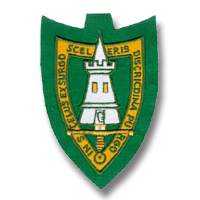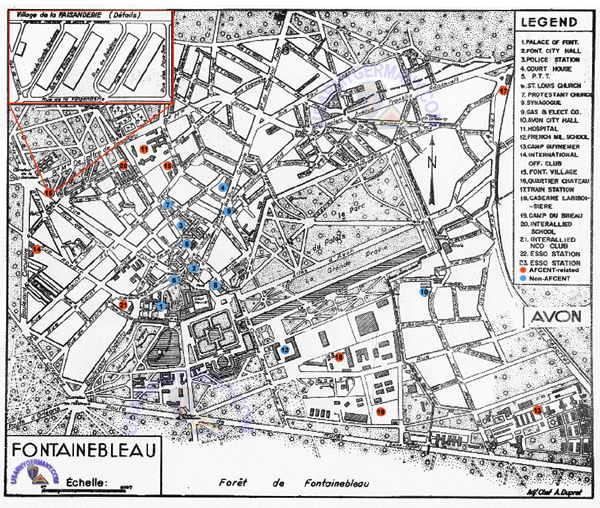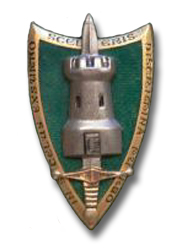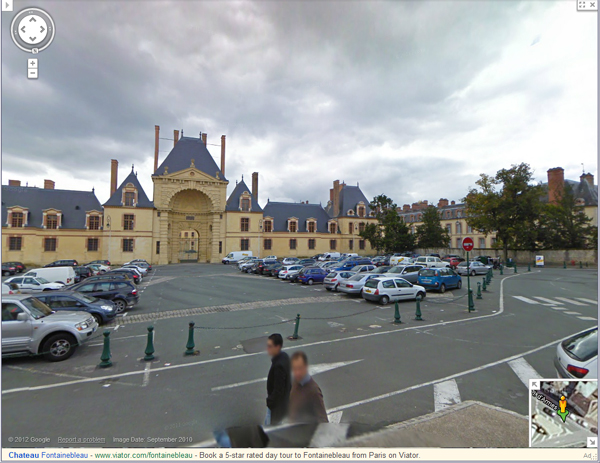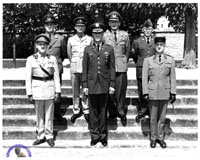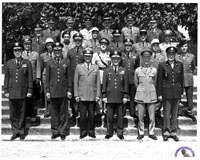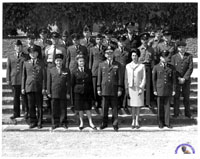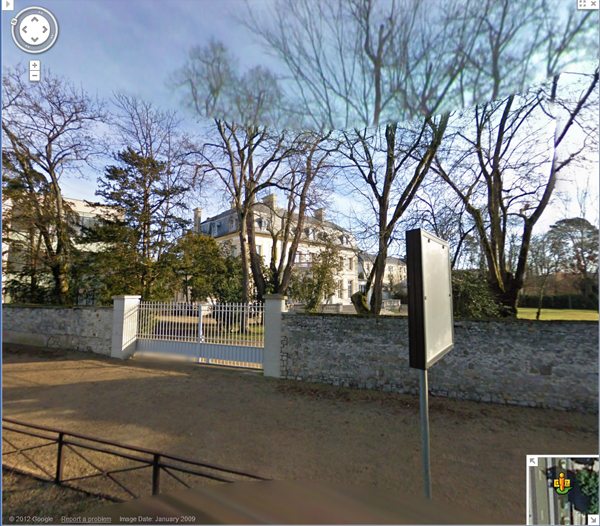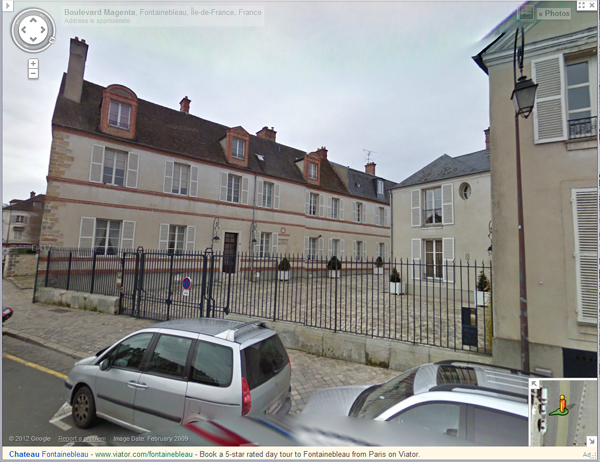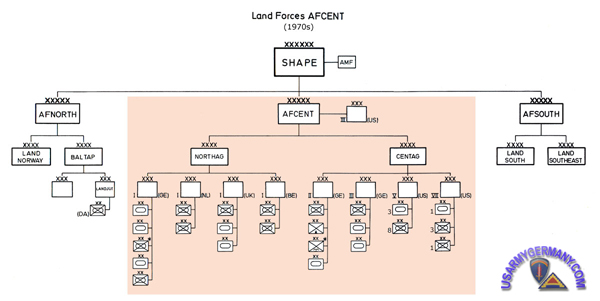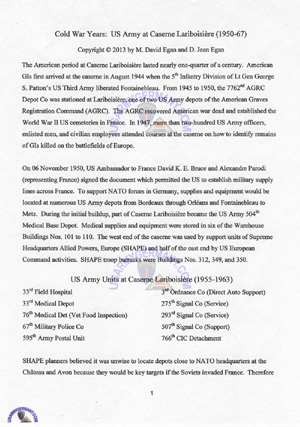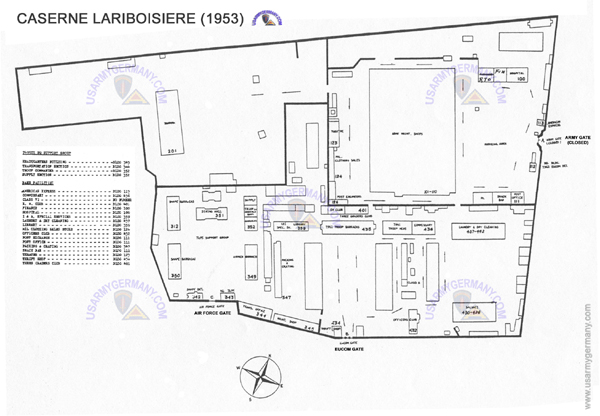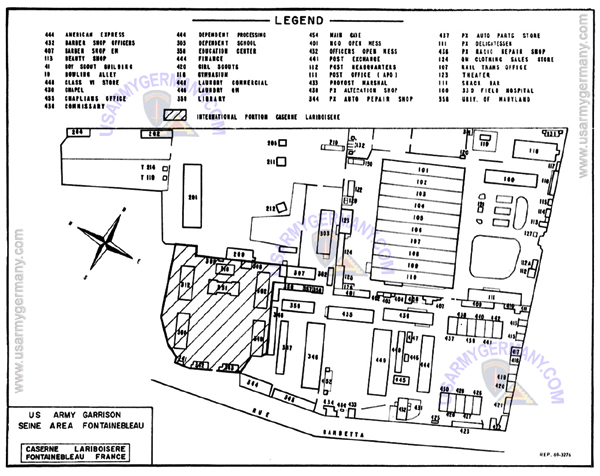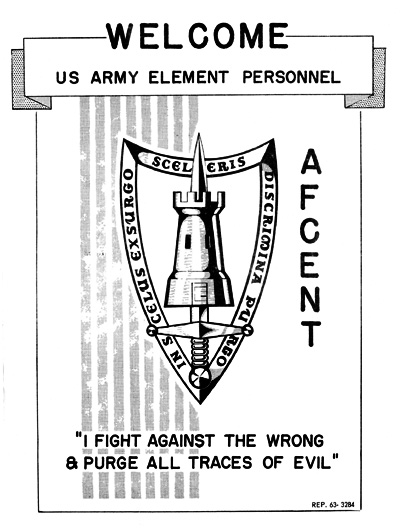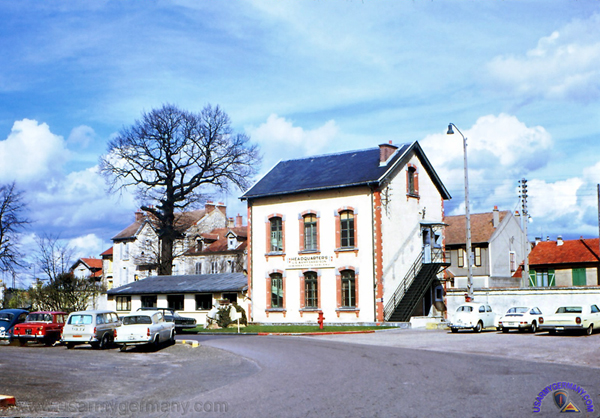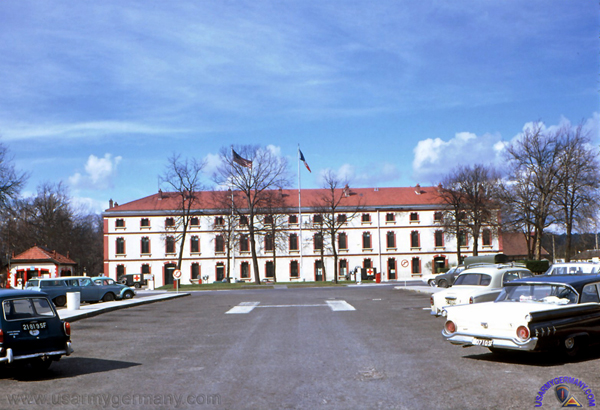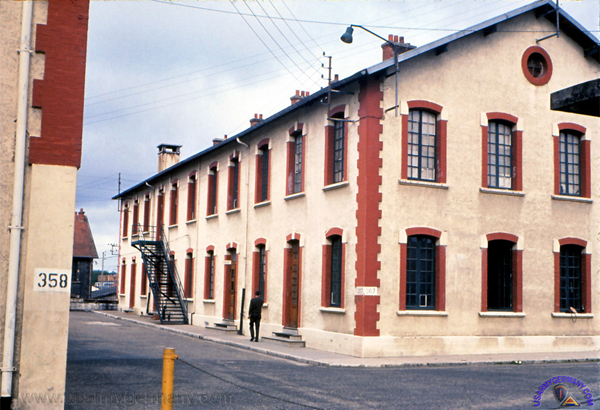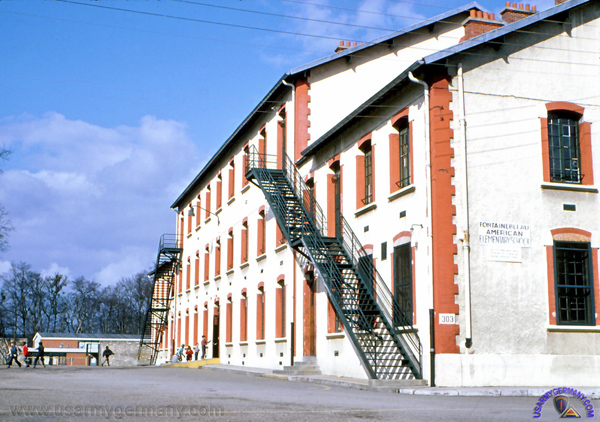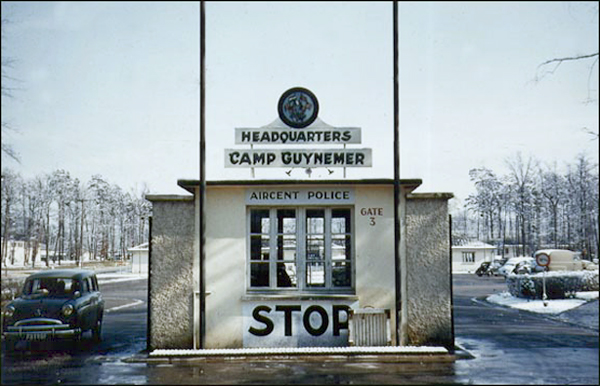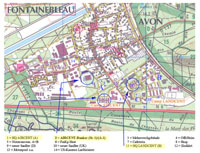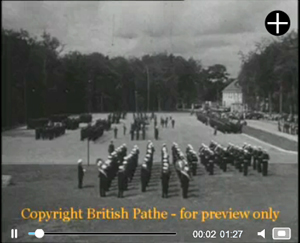| If you do
NOT see the Table of Contents frame to the left of this page, then
Click here to open 'USArmyGermany' frameset |
||||||||||||||||||||||||||||||||||||||||
|
Allied Forces Central Europe |
||||||||||||||||||||||||||||||||||||||||
|
|
||||||||||||||||||||||||||||||||||||||||
|
||||||||||||||||||||||||||||||||||||||||
|
|
||||||||||||||||||||||||||||||||||||||||
| History | ||||||||||||||||||||||||||||||||||||||||
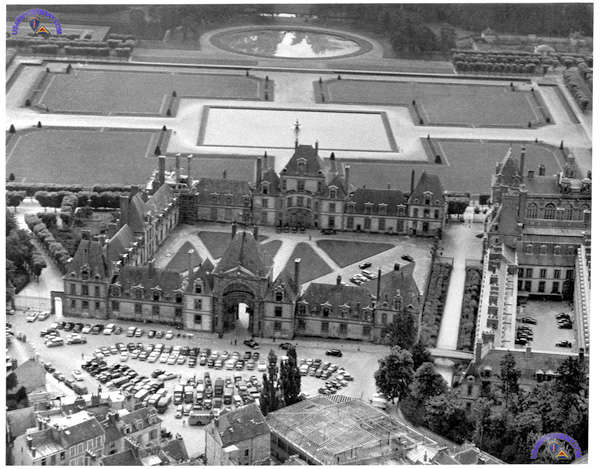 Cour Henri IV (Palace of Fontainebleau), seat of Heaquarters AFCENT until 1967 |
||||||||||||||||||||||||||||||||||||||||
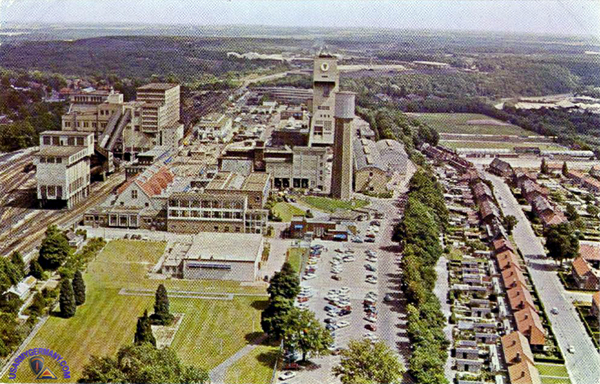 Camp Hendrik, Brunssum, The Netherlands, Heaquarters AFCENT after 1967 |
||||||||||||||||||||||||||||||||||||||||
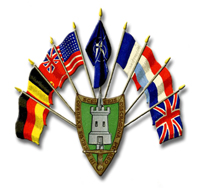 Allied Forces Central Europe (1950s) Allied Forces Central Europe (1950s) |
||||||||||||||||||||||||||||||||||||||||
| Commander-in-Chief, Allied Forces Central Europe | ||||||||||||||||||||||||||||||||||||||||
1953 - 1991 (listed are CINC's during Cold War only)
|
||||||||||||||||||||||||||||||||||||||||
| 1953 | ||||||||||||||||||||||||||||||||||||||||
| (Source: STARS & STRIPES, Apr 5, 1954) | ||||||||||||||||||||||||||||||||||||||||
| On Aug 3, 1953 French Marshal Alphonse-Pierre Juin was named Commander-in-Chief of Allied Forces, Central Europe. Before that, Juin had served as Commander-in-Chief, Allied Land Forces, Central Europe (since March 29, 1951). General Juin was named a marshal of France on August 3, 1952. |
||||||||||||||||||||||||||||||||||||||||
| (Source: STARS & STRIPES, Nov 14, 1953) | ||||||||||||||||||||||||||||||||||||||||
| The 50-man headquarters of Allied Naval Forces Central Europe (ANFCE) was moved recently from its Fontainebleau Palace offices to Camp Guynemer. French Vice-Adm Robert Jaujard is commander-in-chief of ANFCE. Allied forces in central Europe have four headquarters in the Fontainebleau area. The over-all command of Marshal Alphonse P. Juin, AFCE commander-in-chief, and the land forces command under Gen Marcel M. Carpentier, remain located at the Fontainebleau (court of Henry IV). |
||||||||||||||||||||||||||||||||||||||||
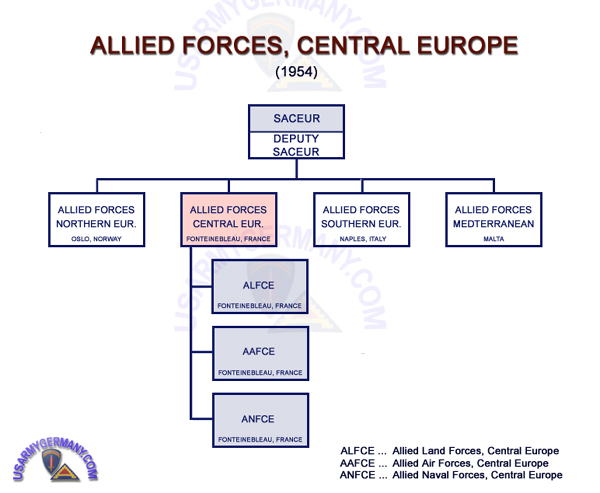 AFCE organization, July 1954 (adapted from NATO, the first five years) |
||||||||||||||||||||||||||||||||||||||||
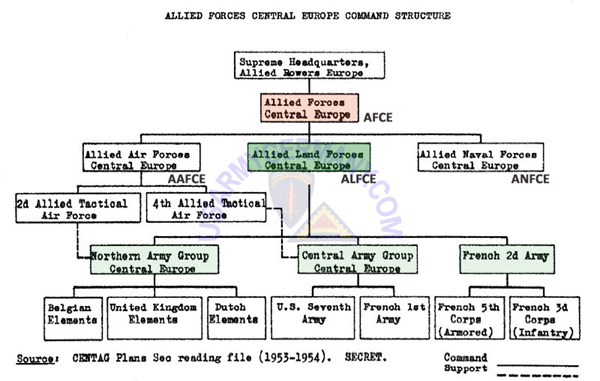 AFCE organization, 1953 (USAREUR Annual History, 1953-1954) |
||||||||||||||||||||||||||||||||||||||||
| 1954 | ||||||||||||||||||||||||||||||||||||||||
| (Source: STARS & STRIPES, Jan 19, 1954) | ||||||||||||||||||||||||||||||||||||||||
|
||||||||||||||||||||||||||||||||||||||||
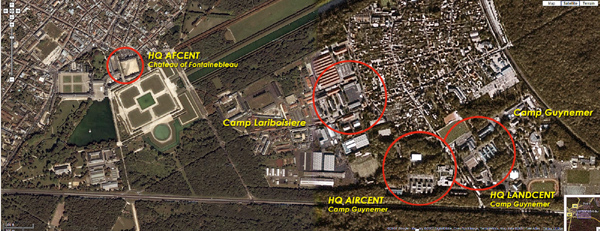 Fontainebleau ( HQ AFCENT; HQ AIRCENT; HQ LANDCENT |
||||||||||||||||||||||||||||||||||||||||
| Headquarters AFCENT NORTHAG / TWOATAF CENTAG / FOURATAF USAREUR |
||||||||||||||||||||||||||||||||||||||||
|
||||||||||||||||||||||||||||||||||||||||
| (Source: Email from Manfred Rihlmann, Germany) | ||||||||||||||||||||||||||||||||||||||||
By chance I came across the photos of Members of the G-3 staff, especially Photo 3, showing BrigGen Irzyk together with personnel. At the time I was a member of LANDCENT Operations Training Branch in Fontainebleau. |
||||||||||||||||||||||||||||||||||||||||
| 1965 | ||||||||||||||||||||||||||||||||||||||||
| (Source: STARS & STRIPES, May 10, 1966) | ||||||||||||||||||||||||||||||||||||||||
| Today, there are about 60 allied divisions assigned to NATO in Europe. Of those, 23 are stationed in the critical central area in Germany under the command of AFCENT. The bulk of these are 6 US (1), 12 West German, 3 British and 2 French divisions in Germany. US troops in Germany under NATO total 210,000 soldiers; there are also about 51,000 British troops and 70,000 French troops. The West German armed forces total about 440,000 men that are assigned to NATO. The ground troops are supported by 5,500 tactical aircraft based on 220 NATO airfields and a vast stockpile of American tactical nuclear weapons and warheads. The 26,000 American troops in France are support troops that man a network of supply depots, port installations, communications, airfields and a 550-mile oil pipeline. (1) There are actually five US divisions, one separate brigade (Berlin Bde) and three Armored Cavalry regiments (2nd, 3rd and 14th). |
||||||||||||||||||||||||||||||||||||||||
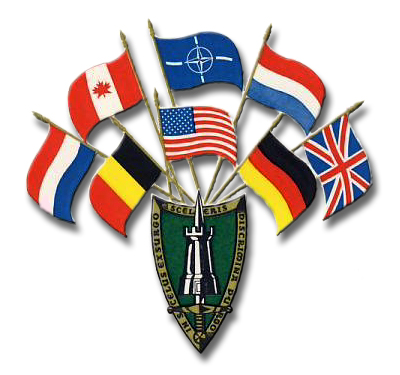 Allied Forces Central Europe Emblem, 1970s |
||||||||||||||||||||||||||||||||||||||||
| 1967 | ||||||||||||||||||||||||||||||||||||||||
| (Source: STARS & STRIPES, June 3, 1967) | ||||||||||||||||||||||||||||||||||||||||
On June 1, 1967 Allied Forces Central Europe officially established its new headquarters at Camp Hendrik (a former state coal mine near Brunssum, The Netherlands. |
||||||||||||||||||||||||||||||||||||||||
| Fontainebleau Garrison, Seine Area | ||||||||||||||||||||||||||||||||||||||||
| AMERICAN GRAVES REGISTRATION COMMAND | ||||||||||||||||||||||||||||||||||||||||
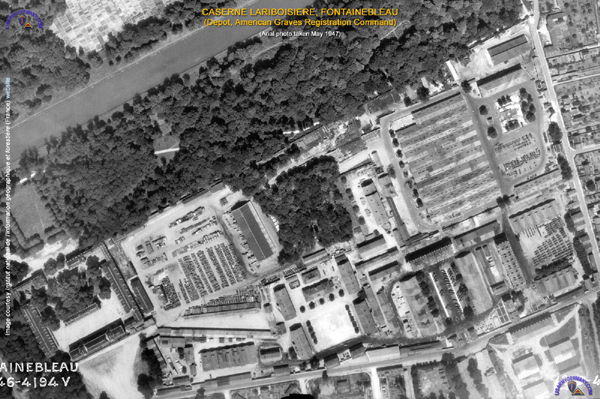 Caserne Lariboisiere, a major depot of the American Graves Registration Command in France, May 1947 (Photo: IGN website, France) |
||||||||||||||||||||||||||||||||||||||||
|
||||||||||||||||||||||||||||||||||||||||
| SEINE AREA, FONTAINEBLEAU | ||||||||||||||||||||||||||||||||||||||||
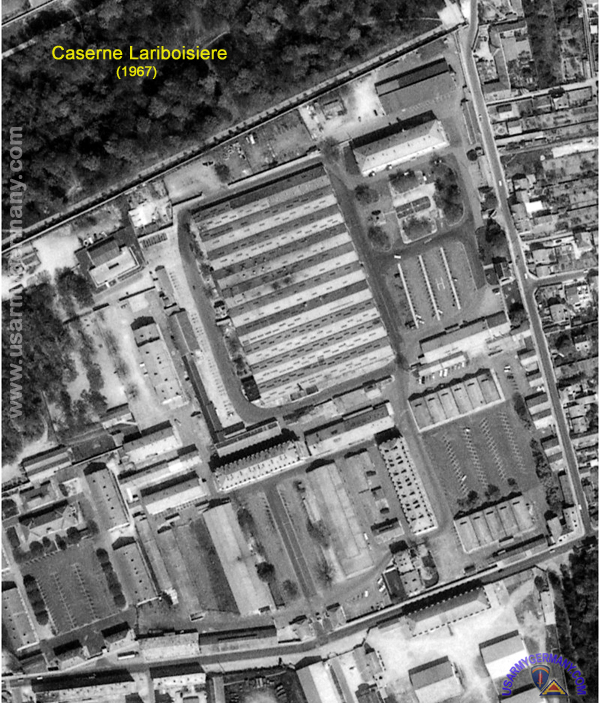 Caserne Lariboisiere just after US troops left France in 1967 (Photo: IGN website, France) (Click on image to view annotated version and location of units and activities) |
||||||||||||||||||||||||||||||||||||||||
| 1964 | ||||||||||||||||||||||||||||||||||||||||
| (Source: THE PERISCOPE Orientation Booklet, 1964) | ||||||||||||||||||||||||||||||||||||||||
| US Army Garrison, Seine Area, Fontainebleau BRIEF HISTORY Fontainebleau is located in the Department of Seine-et-Marne, thirty-seven miles south-east of Paris. It is situated in the Forest of Fontainebleau which covers approxirnately 42,200 acres, with a circumference of fifty-six miles, and is considered to be one of the most beautiful forests in France. The City of Fontainebleau is a very colorful and historic city. Its history dates back to the 16th century and it has, in the past, served as a summer headquarters for many rulers of France. The Palace of Fontainebleau (Chateau), located within the city, is one of the largest residences in France. The Caserne Lariboisiere, located in Fontainebleau, is composed of 104 buildings in an area of approximately 40 acres. The Caserne has been in use continually by United States Army activities since the liberation of Fontainebleau in the fall of 1944. An Officers Candidate School, which served the United States Army in this theater of operations, was located here shortly after the liberation. After World War II a depot, which served the American Graves Registration Command, was situated on the Caserne. It is believed that the Caserne Lariboisiere has been utilized by the United States Army longer than any other installation in France. It presently houses all services such as a general dispensary, dependent school, theater, chapel, commissary, Servivce Club, Officers' Open Mess, NCO and EM Open Messes, Post Exchange, Snack Bar, Bowling Alley, and several other services which are of a purely American character. MISSION The United States Army Garrison, Seine Area, Fontainebleau, is charged with the mission of providing administrative and logistical support to assigned and attached units in addition to providing logistical support to the United States Elements of Allied Forces Central Europe (Army, Navy and Air Force); to Hq French District, EES; Hq Petrolelum Distribution Command, Europe; and to such other United States Army units as are stationed in the Fontainebleau area. The US Army Garrison also provides a station-type support, including personal support such as medical and dental service, Commissary, Post Exchange, religious service, finance, transportation and recreation (which includes the operation of a theater, Bowling Alley, Service Club and Officers', NCO and EM Open Messes). The United States Army Garrison, Seine Area, Fontainebleau, is also charged with the responsibility of forecasting, requisitioning, receiving, storing, securing and issuing supplies required for the support of the above-mentioned American organizations. |
||||||||||||||||||||||||||||||||||||||||
| AIRCENT / AAFCE History | ||||||||||||||||||||||||||||||||||||||||
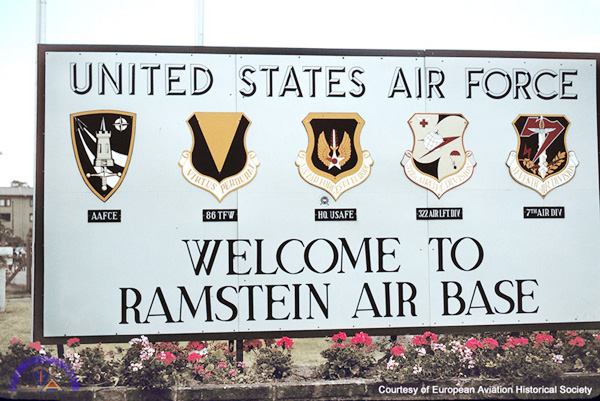 AAFCE Headquarters, Ramstein Air Base, 1974 |
||||||||||||||||||||||||||||||||||||||||
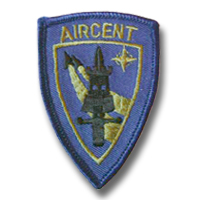 AIRCENT Patch AIRCENT Patch |
||||||||||||||||||||||||||||||||||||||||
| (Source: Email from Helmut Kaemmerer, veteran of German Army Signal Corps assigned to NATO) | ||||||||||||||||||||||||||||||||||||||||
|
||||||||||||||||||||||||||||||||||||||||
| 1951 | ||||||||||||||||||||||||||||||||||||||||
| (Source: STARS & STRIPES, October 4, 1951) | ||||||||||||||||||||||||||||||||||||||||
| With the arrival from Washington of Maj Gen F. L. Ankenbrandt, the new deputy chief of staff for communications at HQ Allied Air Forces, Central Europe, the AAFCE staff is now complete. The AAFCE key staff posititons under Lt Gen Lauris Norstad are:
|
||||||||||||||||||||||||||||||||||||||||
| 1952 | ||||||||||||||||||||||||||||||||||||||||
| (Source: STARS & STRIPES, April 4, 1952) | ||||||||||||||||||||||||||||||||||||||||
| HQ AAFCE announced on April 3 that a radar system covering eastern France, Luxembourg, Belgium and The Netherlands has been put in operation on a part-time basis. The radar system is coordinated with the radar units of Allied forces in Western Germany. It will be operated on 24-hour basis "within months." | ||||||||||||||||||||||||||||||||||||||||
| (Source: STARS & STRIPES, April 6, 1952) | ||||||||||||||||||||||||||||||||||||||||
| AAFCE HQ construction A new headquarters compound (eventually to be named Camp Guynemer) is being constructed in the middle of the historic Fontainebleau National Forest. About 1,400 workmen employed by French contracting firms are involved in the construction work that began on January 10, 1952 and is scheduled to be completed by June 1. One- and two-story prefabricated buildings laid out on an 11-acre clearing will provide working quarters for 3,000 military and civilian personnel who work for the Allied Air Forces, Central Europe headquarters. The work includes roads being cut and surfaced and parking grounds laid out for 1,000 vehicles. A "Fontainebleau Village" (housing area) is planned for construction nearby with seven-story buildings that will house 300 families of Allied airmen and civilians stationed at the headquarters. Many of the Air Force units earmarked for assignment at the new NATO installation are already in Europe. |
||||||||||||||||||||||||||||||||||||||||
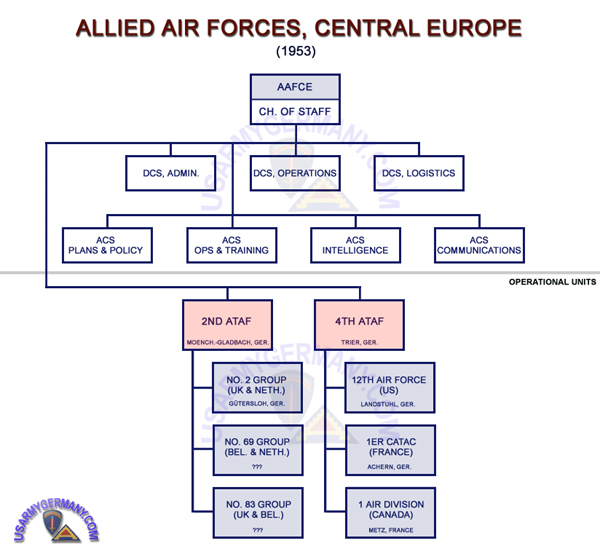 AAFCE organization, 1953 (adapted from FLIGHT, 26 June 1953 issue) |
||||||||||||||||||||||||||||||||||||||||
| 1953 | ||||||||||||||||||||||||||||||||||||||||
| ADDITIONAL INFORMATION | ||||||||||||||||||||||||||||||||||||||||
|
No. 2 GROUP (HQ Gütersloh, Germany): Royal Netherlands Air Force tactical units equipped with Republik F-84G Thunderjets are based at Volkel and Eindhoven. They are assigned to the UK-Dutch No 2 Group (Source: FLIGHT, 13 May 1955). In a report on Exercise BATTLE ROYAL (Sept 1954), FLIGHT stated that the UK- Dutch group would not be fully integrated (at all levels of control) until October or November 1954. No. 69 GROUP (HQ ?): This group is responsible for the defense of Belgium and Holland. The squadrons comprising this group are equipped mainly with Meteors. Royal Netherlands Air Force air defence units (squadrons at Leeuwarden, Twente and Soesterberg Air Bases equipped with Dutch-built Meteor F.8s and British-built Metero N.F.11s) are combined in the Dutch-Belgian No 69 Group (Source: FLIGHT, 13 May 1955). No. 83 GROUP (HQ ?): In a report on Exercise HOLD FAST (Sept 1952), FLIGHT stated that the UK- Bel group had recently been formed with Air Marshal Foster in command (A.O.C.). It was stated that the UK- Bel group had already achieved full integration (at all levels of control) and was serving as a model for Allied tactical air forces. HOLD FAST was the group's first exercise. |
||||||||||||||||||||||||||||||||||||||||
| 1959 | ||||||||||||||||||||||||||||||||||||||||
| (Source: STARS & STRIPES, March 3, 1959) | ||||||||||||||||||||||||||||||||||||||||
| AIRCENT Communications Group (See information in the NATO Communications chapter on the Overview Page, Signal Section). |
||||||||||||||||||||||||||||||||||||||||
| 1963 | ||||||||||||||||||||||||||||||||||||||||
| (Source: STARS & STRIPES. April 2, 1963) | ||||||||||||||||||||||||||||||||||||||||
| AIRCENT To Observe 12th Birthday The seven nation NATO command of Allied Air Forces Central Europe (AIRCENT) will mark its 12th anniversary at its headquarters in Fontainebleau on April 2, 1963 by inaugurating a permanent display of AIRCENT squadron crests in the entrance of the headquarters building. The display will be unveiled during an international ceremony hosted by the AIRCENT commander, Air Chief Marshal the Earl of Bandon. The crests represent operational flying units which, located on NATO air bases in the Central Region, are committed to AIRCENT by Belgium, Canada, Germany, France, The Netherlands, the United Kingdom and the United States. Many ranking air officers from these countries, including the chiefs of the Belgian, German and Netherlands air forces are expected to attend the anniversary ceremony. AIRCENT's mission is to help prevent any aggressive action against NATO territory. In addition to its aircraft strength which now totals more than 2,000 jet planes, the command boasts a growing force of surface-to-surface and surface-to-air missiles. |
||||||||||||||||||||||||||||||||||||||||
| 1966 | ||||||||||||||||||||||||||||||||||||||||
| (Source: STARS & STRIPES, Nov 15, 1966) | ||||||||||||||||||||||||||||||||||||||||
| On November 15, 1966 Headquarters AIRCENT merged with Hqs AFCENT as part of an integrated Army-Air Force-Navy command for NATO's Central Region. The modified headquarters (AFCENT) will have separate air and land operational command sections. Last AIRCENT commander was British Air Chief Marshal Sir Edmund Hudleston, who will now serve as deputy commander-in-chief of AFCENT. CINCAFCENT is German General Johan Adolf Graf von Kielmansegg. |
||||||||||||||||||||||||||||||||||||||||
| (Source: Biographies, Official USAF website, accessed March 18, 2012) | ||||||||||||||||||||||||||||||||||||||||
| In August 1965 General Von R. Shores, USAF, became the deputy chief of staff, operations, Allied Air Forces Central Europe. In September 1966 he became the chief of staff and guided the consolidation of AIRCENT into the reorganized single headquarters of Allied Forces Central Europe, composed of the three former NATO headquarters. With the reorganization he became the deputy chief of staff, operations and intelligence, Allied Forces Central Europe. He had the primary planning responsibility for moving the newly reorganized headquarters from Fontainebleau, France, to Brunssum, the Netherlands, which was accomplished in February-March of 1967. During this entire period of NATO assignment he was the senior U.S. representative in the Allied Forces Central Europe Headquarters. |
||||||||||||||||||||||||||||||||||||||||
| Related Links | ||||||||||||||||||||||||||||||||||||||||
|
